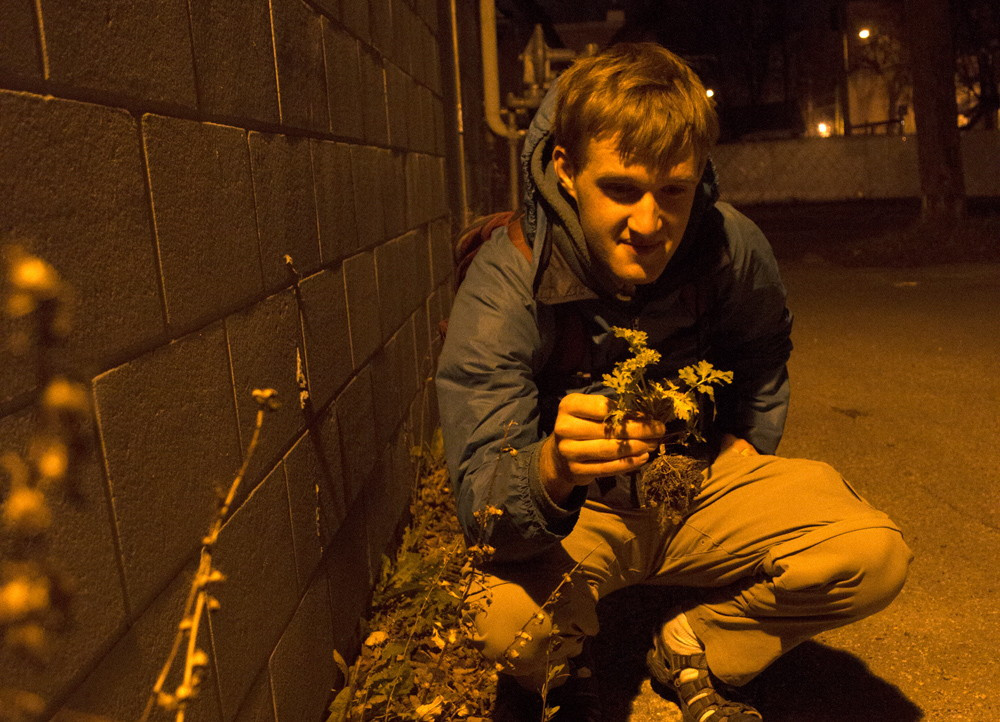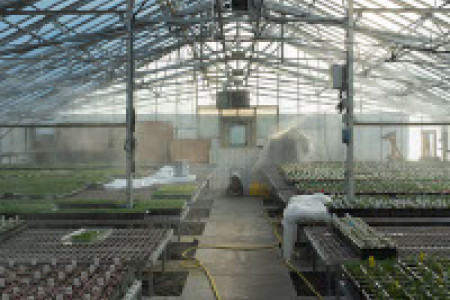Missing the forest for the weeds
Midnight stroll through Winnipeg’s West End reveals vibrant botanical life
Joel Penner takes a half-hour to wander down a vacant alley.
It’s weeds that slow him down the most. They’re terrorists of the botanical world: arbitrarily named, given that any plant can be designated as such if unwanted and prolific. Take the dandelion for example. It’s used across the globe as an edible flower. Throw the leaves in a salad. Roast the roots for a coffee-like drink. Extract latex from the plant for use in tires. Or, just run over them with your lawnmower.
“I love weeds because they show us a uniquely urban assortment of plants that reflects human migration patterns over the centuries and reflects a certain variety of plants that are able to survive in these inhospitable conditions,” says Penner, while plucking at a honeysuckle bush on the side of an alleyway.
It’s close to midnight when we embark on our weed walk. Penner’s led a few before. Last time, the much-larger group identified over 40 weeds. Almost all of them are invasive species, mostly introduced by Europeans. He points out the Siberian Elm, stationed by a West End resident’s garage, as one such example; the “somewhat notorious plant” was brought to the continent in the early 20th century, he notes, with the intent to stabilize soil following the Dirty Thirties.
That ancient parable about the weeds seems fitting: Jesus once allegedly compared the rapid growth of weeds in a field to the rise of evil in a person’s spirit. These little shits are everywhere. But Penner doesn’t subscribe to the popular view of the plants. Burdock, for instance, inspired a Swiss engineer to invent velcro. The leaves of the same plant can be used as toilet paper. It’s bacteria on the root nodules of some weeds that naturally fix nitrogen. It’s also stationed throughout Winnipeg’s streets.
“It’s why I think studying weeds is really important; it’s a fascinating aspect of very ordinary environments that link itself to the elements in history and big ideas in biology and ecology, but in a way that’s very accessible,” he says while ambling.
It’s a remarkable thing to watch Penner interact with plants. He’ll stoop for a few seconds, call out a name, list its attributes and continue. Sometimes - in the case of plantain - Penner will take a bite, quickly spitting the remnants out. The process is a rapid one. He attributes the Internet, specifically Reddit and the Government of Manitoba, as a primary learning facility. Penner also scans decaying plants to create sublime montages; recently, he was flown to England for a nature film festival. Weeds pay off.
Only a few cars pass our investigation. One police car slows as Penner picks dandelions by Broadway. There aren’t many distractions as he explains ecological succession and horticultural history. Eventually, we enjoy libations down by the river. A feral cat hangs out as we chat. I’m by no means a proponent of the Gaia theory, but the 90-minute stroll reinforces the fact that we’re all of the same genes. The clover. The sow thistle. The black cat. Even those goddamn dandelions.
Published in Volume 69, Number 11 of The Uniter (November 12, 2014)






